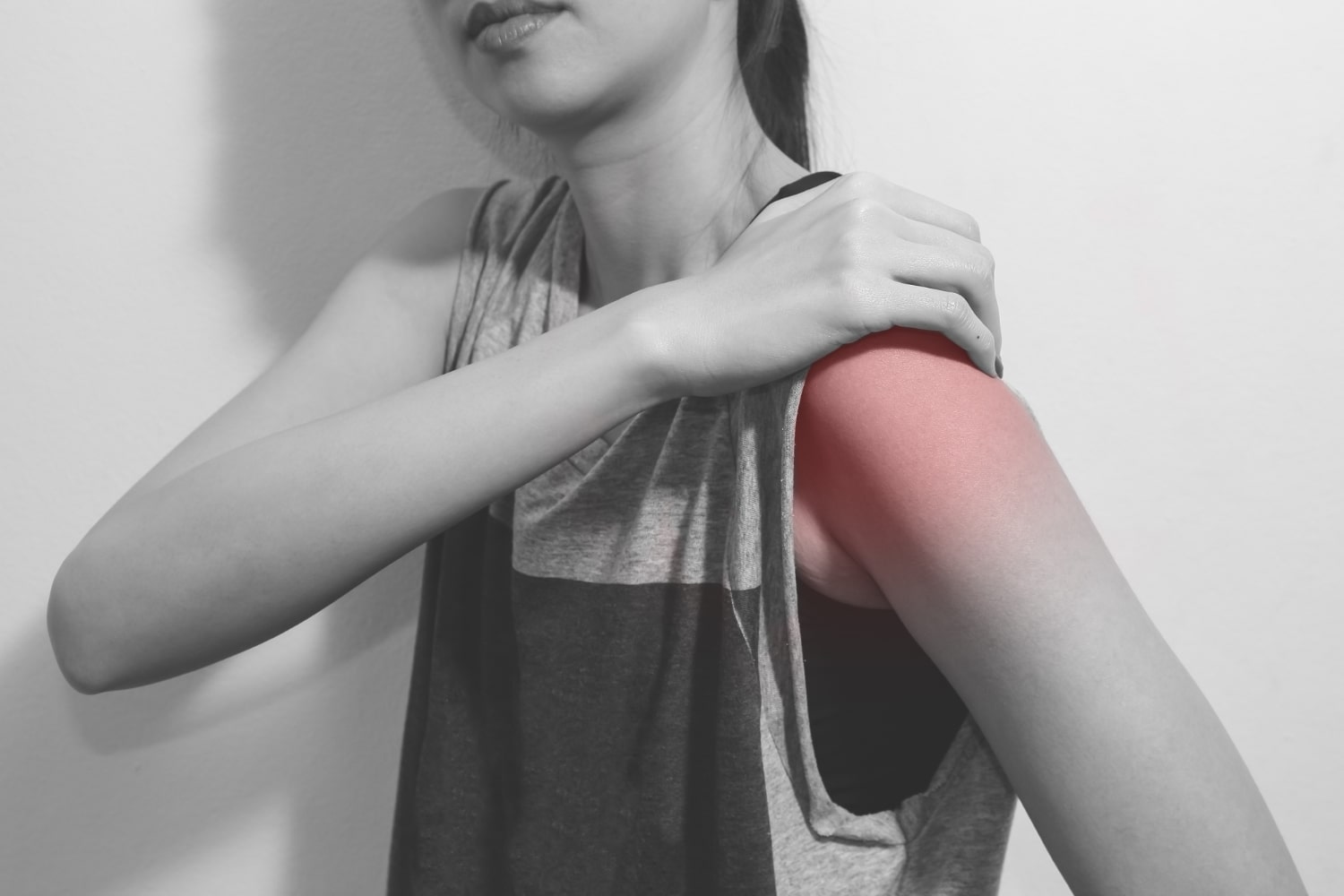
Shoulder Pain
Lorem Ipsum Lorem Ipsum Lorem Ipsum Lorem Ipsum Lorem Ipsum?
Clinical Physio’s evidence-based, 70-day “Reduce Pain, Restore Function” Program.
Glenohumeral Instability/Traumatic dislocation
Glenohumeral instability/Traumatic dislocation
- How does it happen?
Most common are anterior shoulder dislocations/subluxations. A dislocation is when the shoulder pops out and has to be relocated by a health professional. A dislocation episode normally requires an x-ray to rule out any fractures/bankart/hill Sachs lesions. A subluxation is when the shoulder pops out or the player feels a popping sensation and relocates spontaneously. - Risk factors
– Previous traumatic shoulder dislocation - Common symptoms
– Shoulder pain
– Feeling of the shoulder ‘giving out’, loose and slipping in and out of the joint
– Apprehension to put the shoulder in certain positions
– Pins & needles, numbness or arm weakness - Common treatments and recovery expectations
A sling must be worn for 1-2 weeks followed by 4 weeks of progressive rehabilitation after a shoulder dislocation. Recurrent dislocations require surgical stabilisation followed by 4-6 months of rehabilitation.
A subluxation will normally settle within a week and return to play can happen quickly with appropriate management.
Rotator Cuff Tears
- How does it happen?
A tear in the tissue connecting muscles to the bone around the shoulder joint. These tears can be one of the four rotator cuff muscles (Subscapularis, supraspinatus, infraspinatus and teres minor). - Risk factors
– Above 40 years of age
– Previous shoulder injury
– Athletes who regularly use repetitive arm movements, such as tennis players, baseball players, rowers and wrestlers
– Repetitive overhead arm movements or lifting. - Common symptoms
– Pain with raising arm
– Pain sleeping on the shoulder
– Pain with lifting objects
– Weakness
– Clicking or popping when moving arm - Common treatments and recovery expectations
Treatment includes activity modification, pain management, shoulder range of motion and strength exercises.
If the tear is small and of partial thickness, treatment may be conservative, Full-thickness rotator cuff tears in young athletes require surgical repair. In older patients, still active in overhead sports, the choice of surgery or conservative treatment depends upon the degree of discomfort and pain.
Rotator Cuff Tendinopathy/Impingement/Bursitis
- How does it happen?
Shoulder impingement in the mechanical encroachment of the soft tissue (bursa, rotator cuff tendons) in the space between the joint structures. - Common Symptoms
– Pain with overhead activities (e.g. throwing, swimming etc)
– Tenderness on palpation
– Painful active range of the shoulder - Common treatments and recovery expectations
Treatment can be considered in two parts. The first part is to treat the tendinopathy symptomatically, following the RICE protocol, pain management and avoiding aggravating activities. The second part consists of rehabilitation exercises of the rotator cuff itself.
Biceps Pathology
Adding soon
Swimmers shoulder
Adding Soon
Adhesive capsulitis/Frozen shoulder
Adding Soon

